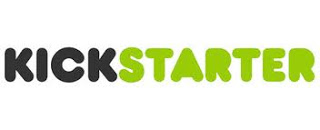No, not a complaint about through-the-roof sales of the Adventures Dark and Deep™ Players Manual (although I am pleased to report that sales are good, and the book is in the top 80 last time I checked on RPGNow.com), but rather an examination of how, exactly, to prevent unexpected success from leading to disaster or near-disaster.
Kickstarter has had its share of unexpected monster hits, and more than its share of those successes turning into failures. And the reason?
People see the enormous numbers coming in and think they need to react to them, rather than sticking to the plan.
On one level, reaction is expected and good. As in, walking around with a stupid grin on your face, or being positively gushing in your thanks and praise of your backers. But what I fail to understand is why, when one gets a ton more money than expected on Kickstarter, one feels the need to then change the project to make it more grandiose than originally planned!
Take the Steve Jackson Ogre Kickstarter (it’s noteworthy because SJG just released their annual report, and Ogre figures prominently for the first time in… well… ever). They asked for $20,000 and ended up with nearly a million dollars. So what did they do when faced with this windfall? They had two options:
- Produce a metric buttload of the modestly scoped game they were originally going to produce, get it done on schedule, and make a nifty profit on each one, or
- Produce a vast monster of a game that went way beyond the original scope, with expensive components, intricate custom packaging, a box that’s so large retailers will have problems making room for it on their shelves, and which costs so much to produce and ship that they actually stand a chance of losing money on each game sold. Not to mention oodles of bonus swag that add to the cost, all still borne by that same pledge that you were expecting to pay for option #1.
EDIT: Removed references to keeping Ogre in production. The larger point, of not changing the project just because one gets a lot of support, still stands unaltered.










I could not agree more. I expected, at most, 150-200 folks to support my Appendix N Kickstarter. Having almost 600 supporters – and thinking I had to up the rewards along the way because of it – has turned a project I really love into a much larger pain for this halfling. 🙂
I won't do it that way ever again.
Well, very well, said. More is not always better, sometimes quality speaks for itself.
Indeed. I am looking at the Myth dungeon crawler kickstarter now and it's all about more, more, more "free" stuff.
The more that gets added the less and less the company will make. And now they are giving away good chunks of their future expansions.
With regards to John and the Appendix N adventure – this is one that stands out for getting sidetracked. The Dagger RPG has taken too much time, and I for one don't even care about having a copy of that. And as time went on he even added even more bonus stuff because of shipping issues and lateness.
The shipping thing is major – most Kicks offer free postage and then pile the goods on. Postage is crazy expensive now and if you double the size of your box…well.
I don't work for SJG, but I don't think the "make a nifty profit" part of #1 is accurate. I think this was always a one-shot deal, SJG breaks even or takes a loss, and some of the profits from Munchkin provides the money to make that happen. It was never presented as a possible choice between "keep it in print" and "one-shot" unless I missed that update somewhere.
Sorry, but you're wrong about Ogre. SJ's been talking about a 6e "designer's edition" of Ogre since at least 2011. I poked around in the archive a bit and found this Mar 12, 2011 post about a $100 box that they "don’t expect to keep this in print. Realistically, I expect to print it once and let people spend the next 30 years fighting over the remaining copies."
http://www.sjgames.com/ill/archive/March_12_2011/Open_Ogre_Letter_To_Distributors
Fair enough; I've taken out the references to keeping the game in production after the first print run.
The larger point, that one shouldn't change the nature of the game just because it gets a lot of support, remains unchanged.
SJG is also releasing the Pocket Ogre game, which is the classic hex and counter we are all used too. This is the version that will remain in print.
I also believe that this was a publicity deal for them and not a money maker.
Munchkin has been and remains their primary moneymaker.